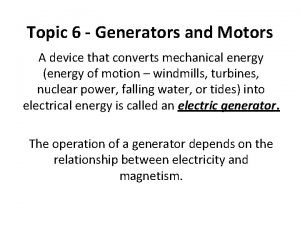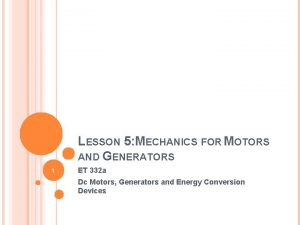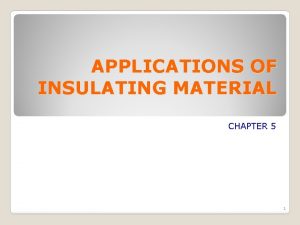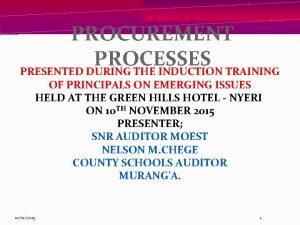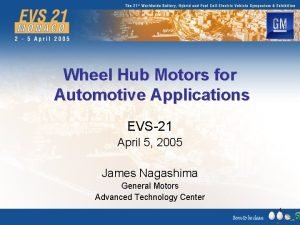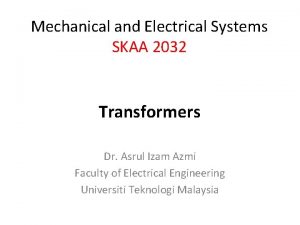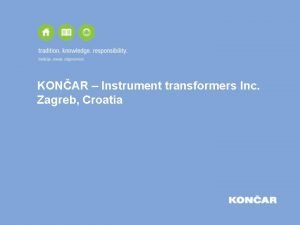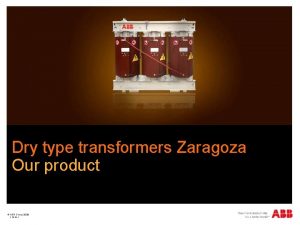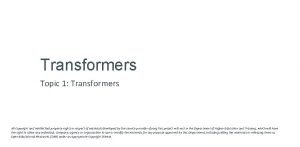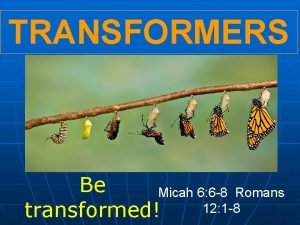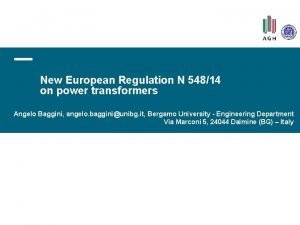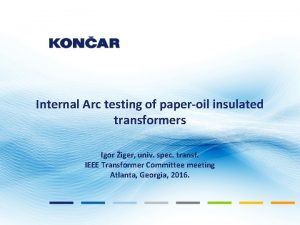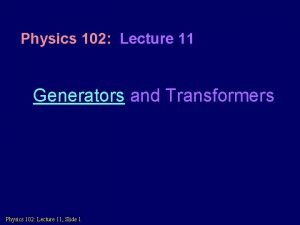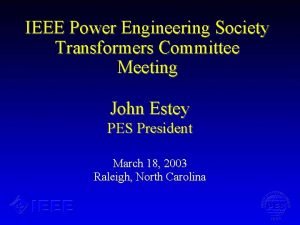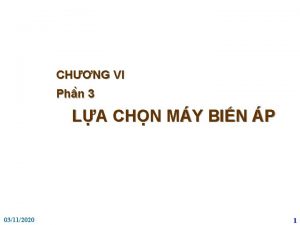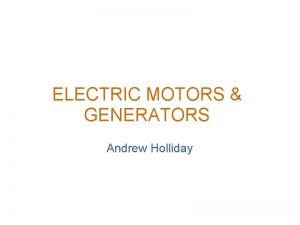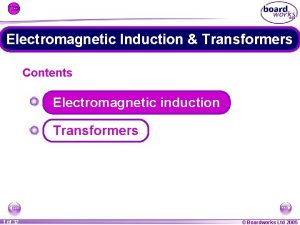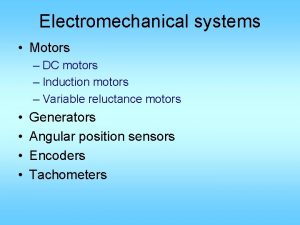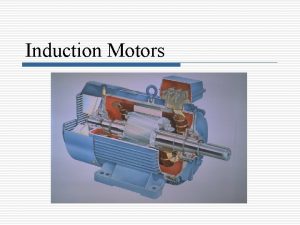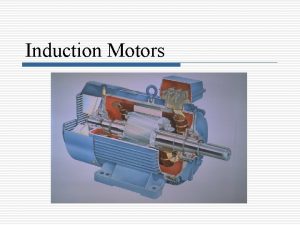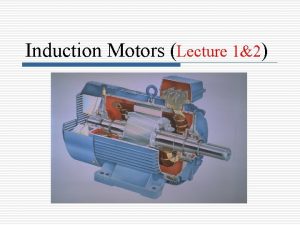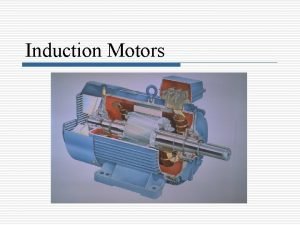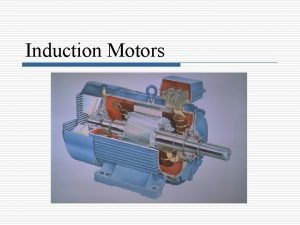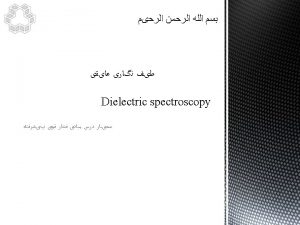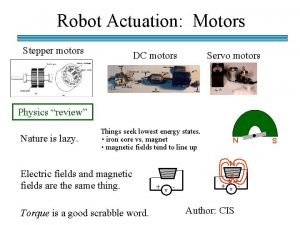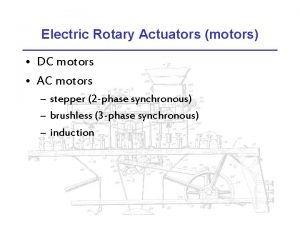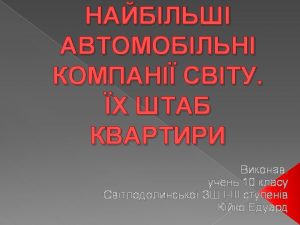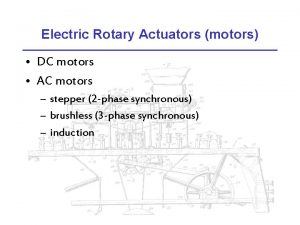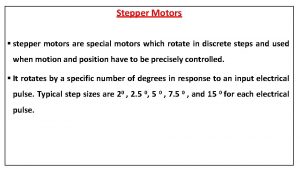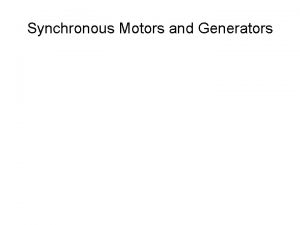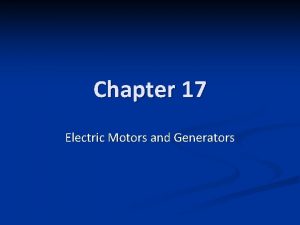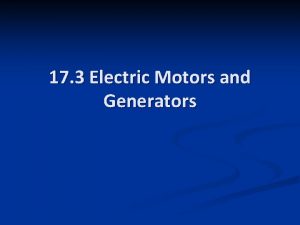Applications of Induction Generators Motors and Transformers Generators


















- Slides: 18

Applications of Induction Generators, Motors and Transformers

Generators �A generator is the opposite of a motor – it transforms mechanical energy into electrical energy. � Turbine generators are used in power plants �A turbine supplies the mechanical energy in the form of a rotating shaft � Turbines are machines that convert moving fluids (such as falling water or highpressure steam) into rotational motion


Turbine Generator �A turbine generator uses induction to produce electricity � A turbine turns a coil of wire inside a magnetic field � An alternating voltage/current is induced in the coil

AC: Alternating Current Generator Demo

Output of an AC Generator � The induce d voltage a output of an AC Generator is a Sinusoid maximum voltage = NAB b c d

Stator Stays Rotor Rotates Turbine Turns

‘Murica � Throughout North America (Canada, USA, Mexico) the same power specifications are used: � 110 -120 Volts AC � Frequency = 60 Hz

Motors � Motors energy � In convert electrical energy into mechanical some sense, motors are the opposite of generators � The applications of motors is endless: fans, blow-dryers, power tools, pumps, washing machines …

DC Motor � Motors use the motor principle (rotational force on a loop of wire in a magnetic field) � DC motors use direct current, so they can run on a battery �A DC motor requires a commutator (slip rings) which reverses the current in the armature � DC motors can be variable speed


Induction Motors � The induction motor is an AC motor that was invented by Nikola Tesla in 1883 � Induction motors have no brushes or slip rings � Their speed is determined by the AC frequency � Induction motors are cheap, quiet, and long lasting � Fans, fridge, dishwasher, washing machine, dryer

Transformers � Transformers are devices that increase or decrease the voltage of alternating current � Transformers make possible our high-voltage, high-efficiency power system � They can step down or step up the voltage

� Transformers work only if the current is changing; this is one reason why electricity is transmitted as ac.

�A transformer consists of two coils, either interwoven or linked by an iron core. � As the primary current oscillates, a changing magnetic field is created in the iron core which induces the secondary current primary current AC in iron ring secondary current load changing magnetic field AC out

� The ratio of the voltages (primary to secondary) is equal to the ratio of the number of turns (primary to secondary):

Example �If the primary coil has 75 turns, how many turns are needed in the secondary coil to step up the voltage from 120 V to 2400 V?

Solution �
 Lesson 6 dc generators and motors
Lesson 6 dc generators and motors Abb ability™ smart sensor
Abb ability™ smart sensor Si units for torque
Si units for torque Which insulating material is used in circuit breakers
Which insulating material is used in circuit breakers Induction motors procurement
Induction motors procurement Wheel hub motors for automotive applications
Wheel hub motors for automotive applications Uses of transformer
Uses of transformer Transformer functions
Transformer functions Josipa mokrovića 12
Josipa mokrovića 12 H1 h2 h3 transformer
H1 h2 h3 transformer Electrical endurance class e2
Electrical endurance class e2 Transformers
Transformers Romans 12 6 8
Romans 12 6 8 Peak efficiency index
Peak efficiency index Probabilty
Probabilty Transformers physics
Transformers physics Ieee transformer committee
Ieee transformer committee Sđm
Sđm Iec 60076 power transformers
Iec 60076 power transformers
